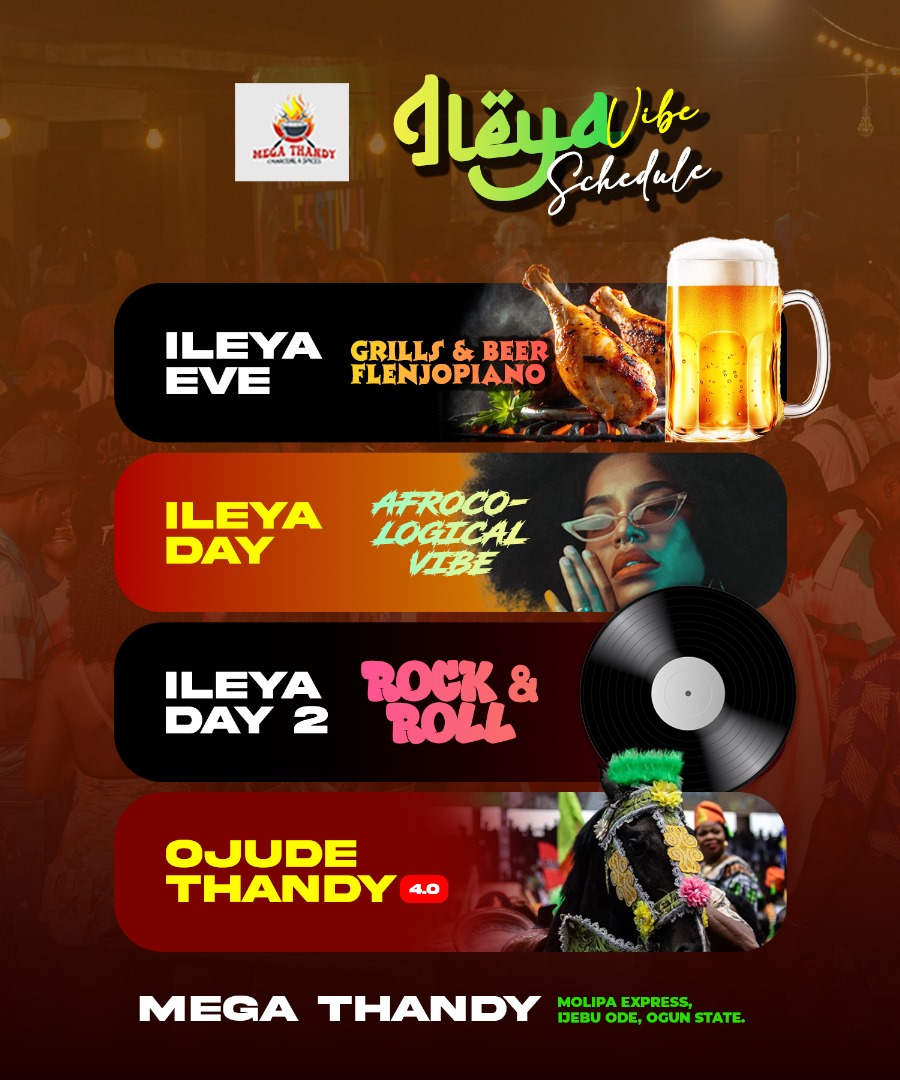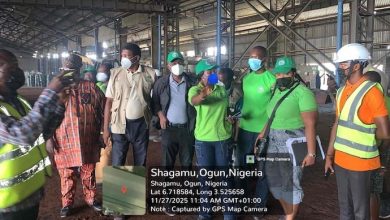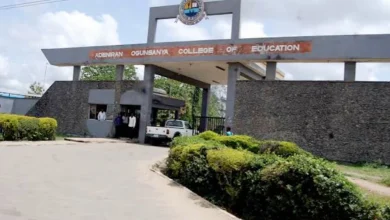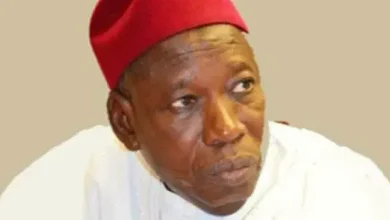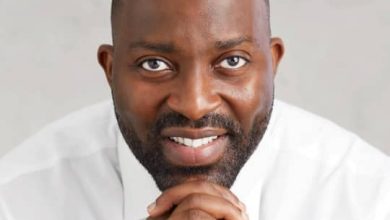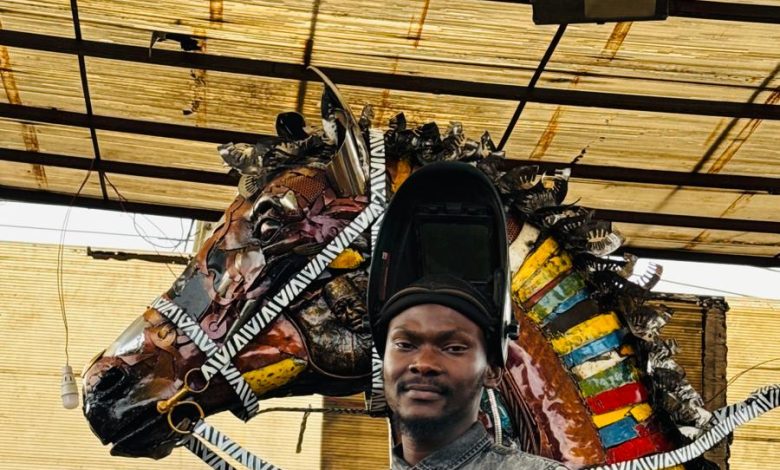
A multi talented artist whose creative genuity has earned him a class of his own. Yusuf Dongo studied
Fine and Applied Arts from the prestigious Obafemi Awolowo University, Ile-Ife where he proceeded to De Montfort University, United Kingdom for his Master’s Degree in Fine Arts.
The young Dude whose brand name, Ayokunle Kreative has carved a niche for himself through dint of handwork and diligence speaks on his journey to stardom and the much anticipated exhibition during the 2025 Ojude Oba Festival.
Excerpts
Can you tell us a bit about yourself and what inspired you to become a sculptor?
I’m Yusuf Dongo, a multidisciplinary artist from Ijebu-Ode, Ogun State, Nigeria. My work blends cultural preservation with environmental sustainability, transforming scrap metal and discarded objects into striking sculptural forms. I graduated with a degree in Fine and Applied Arts from Obafemi Awolowo University and later earned a Master’s in Fine Art from De Montfort University, UK.
My inspiration to become a sculptor came from my early experience with metal fabrication. I saw potential in that skill and decided to explore it further as a metal sculptor.
What themes or stories do you often explore through your sculptures?
I explore themes of identity, memory, and value through the medium of upcycling. My work reflects the philosophy of turning “waste into wealth” and “trash into treasure.”
What is the cultural or personal significance behind the materials you use?
Sustainability, repurposing, and upcycling are core to my material choices. Scrap metal makes my work more expressive and allows me to break rules for the sake of creative freedom.
Why have you chosen the Ojude Oba Festival as the platform to showcase your work?
Ojude Oba is the perfect platform to exhibit this masterpiece. I want both indigenes and non-indigenes to connect with the rich culture, tradition, and history of Ijebu through my work. It’s also a great space for dialogue, networking, and connecting with like-minded creatives.
How do your sculptures reflect the spirit, history, or traditions of Ojude Oba?
My sculpture reflects the rich history of Ijebu and Ojude Oba. It serves as a monument honoring past and present Baloguns of Ijebuland, featuring their relief portraits and busts. It also includes a bust of the Awujale, the longest-reigning monarch in Nigeria.
The work stands as a cultural icon and symbol of what we celebrate today as Ojude Oba.
Have you attended the festival in the past? If so, how did it influence your artistic vision?
Yes, I’ve been participating in the Ojude Oba Festival for several years. I’m from the Shote Towobola family and also ride horses in representation of my family.
Over the past five years, the festival has greatly influenced me. I’ve created two masterpieces inspired by it. This current project is the largest sculpture I’ve created in expressing my ideas about Ojude Oba.
What kind of reaction or impact do you hope your work will have on festival attendees?
I’m not entirely sure, but I expect mixed reactions—both positive and constructive criticism. I believe the sculpture will attract a lot of attention and spark conversations, especially regarding how it was created.
Are your sculptures interactive or symbolic in ways that connect directly with Yoruba culture or the Ijebu people?
Yes, my works are deeply rooted in Yoruba culture. They’re accessible through both style and context. Most of my pieces are titled in Yoruba, which helps viewers connect with them on a cultural level.
What story does your most significant piece for the exhibition tell?
This piece focuses on identity—where I come from and where I belong. It tells the story of Ijebu history and how Ojude Oba evolved into the globally recognized festival it is today.
How long did it take you to prepare the pieces for this exhibition?
It took me about three years to prepare for this project. I attempted to showcase it last year, but unfortunately, it didn’t materialize then.
What challenges have you faced in getting your work ready for the festival?
There were several challenges:
• Difficulty reaching some of the families featured in the project; many didn’t initially believe in the idea.
• Accessing scrap materials was tough, as most sellers preferred to sell in bulk to companies at high rates.
• Electricity was another issue—I relied on a generator for about 80% of the production.
• There was no community support throughout the process.
Are there any collaborations with local artisans or cultural groups involved in this project?
No, there were no collaborations on this project. It’s a personal initiative I developed on my own.
What does it mean to you, personally and professionally, to be part of Ojude Oba?
Ojude Oba holds deep personal meaning for me. Ever since I began horse riding to represent my family, I’ve felt honoured each year to pay homage to the king in full regalia.
Professionally, it has inspired me to create artworks that express my identity as a true son of Ijebu-Ode. This year’s project is the biggest upcycled metal sculpture in Ogun State—and the biggest I’ve ever done.
How do you hope your participation will influence younger artists or the local art scene?
I hope my work inspires younger artists to dream bigger and take bold steps in their creative journeys. I want it to give them the courage to pursue ambitious projects and believe in their craft.
Where do you see your art heading after this exhibition?
Honestly… I can only follow the signs (smiles). I believe this piece will generate buzz after Ojude Oba and open doors I never imagined. It’s a one-of-a-kind masterpiece in Ijebu, and I’m excited for where it will take me.


